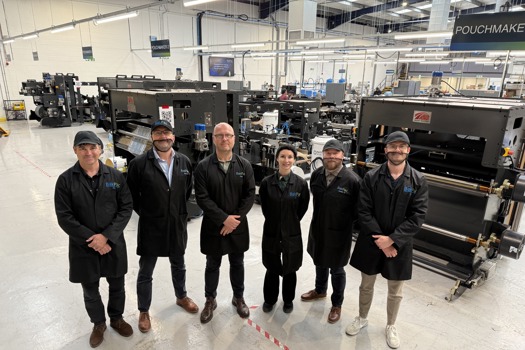The scenario is familiar to all printers: it is 2am in the press hall, the printer has a new job which features some happy faces against a sky blue background. But try as he might, even with all his years of experience and dizzying amounts of computer power at his disposal, the printer just can't get both the flesh tones and the blue sky background to match the proof, even though it has been generated in-house on an ink-jet printer, and has been signed off by the client. The ink-jet proofing device was an Iris, recognised as the best available. The job, a 475,000 run DL flyer is booked into a bindery slot later, which if missed will cause problems in delivery scheduling. A decision is needed what does he do? Well, in this case the press minder at Sydney's Craft Printing plumped for common industry practice in getting the flesh tones correct, in so doing knocking the sky blue away from the colour on the proof.
Good choice? Not according to the client, a print management company working on behalf of the Cancer Council. "It doesn't look like the proof," came the cry, claiming that the blue sky was the key colour across a range of print advertising. A reprint was demanded. Normally, the printer acquiesces in these cases but Craft Printing is part of the giant Hannanprint organisation, Australia's second biggest printing company, which is headed by a man with deep pride in his printing ability, and equally deep pockets.
The client refused to pay, Craft Printing sued for the money and, in a landmark decision in a Sydney court, the judge remarkably came down in favour of the printer, effectively, according to some in the Australian print industry at least, spelling the end of the contract proof here. The judge found that even though the printed job varied from the proof, it was nonetheless of acceptable commercial quality, and ordered the client to pay for the job.
Printers now have a plethora of digital proofing systems to choose from, the leading contenders of which now claim to offer exact press simulation. They insist that by matching the variables (dot gain of the press, tonal values, substrate characteristics and ink colour) and using spectrophotometry and densitometry, you will get an exact match not just close, but exact. There is now much wailing and gnashing of teeth in that part of the industry.
The judge has now effectively said to Australian print buyers that the only proof they can demand matching to is a press proof, a decision which has put a bountiful spring in the step of every printer in the country. The judge has now made it crystal clear that, as far as colour matching goes, the printer now unquestionably has the last word.
Wayne Robinson is a freelance graphic arts journalist based in Sydney. He covers Australasia and the Far East, and is a regular contributor to Australian Printer, Asia Pacific Packaging, and New Zealand Printer. Email
waynepmg@tpg.com.au.
Letter from Australia
Printers win the day






